
Rabbit Anti-Phospho-FLG (Tyr766)antibody
FGFR1 (phospho Y766); p-FGFR1 (phospho Y766); Phospho-FGFR1 (Tyr766); P-FLG (Tyr766);FLG (Phospho-Tyr766);FGF Receptor 1; bFGF R; BFGFR; C FGR; CD 331; CD331; CD331 antigen; CEK; FGFBR; FGFR 1; FGFR1; Fibroblast growth factor receptor 1; FLG; FLG protein;
View History [Clear]
Details
Product Name Phospho-FLG (Tyr766) Chinese Name 磷酸化碱性成纤维细胞生长因子受体1(CD331)抗体 Alias FGFR1 (phospho Y766); p-FGFR1 (phospho Y766); Phospho-FGFR1 (Tyr766); P-FLG (Tyr766);FLG (Phospho-Tyr766);FGF Receptor 1; bFGF R; BFGFR; C FGR; CD 331; CD331; CD331 antigen; CEK; FGFBR; FGFR 1; FGFR1; Fibroblast growth factor receptor 1; FLG; FLG protein; FLJ14326; FLT 2; FLT2; Fms like tyrosine kinase 2; Fms related tyrosine kinase 2; Fms related tyrosine kinase 2 Pfeiffer syndrome; H2; H3; H4; H5; HBGFR; Heparin binding growth factor receptor; Hydroxyaryl protein kinase; KAL 2; KAL2; MFR; N SAM; N sam tyrosine kinase; Protein tyrosine kinase; Tyrosylprotein kinase; Basic fibroblast growth factor receptor 1. Product Type Phosphorylated anti Research Area Tumour immunology Apoptosis Growth factors and hormones transcriptional regulatory factor Immunogen Species Rabbit Clonality Polyclonal React Species Human, Mouse, Rat, (predicted: Chicken, Dog, Pig, Cow, Horse, ) Applications WB=1:500-2000 ELISA=1:5000-10000 IHC-P=1:100-500 IHC-F=1:100-500 IF=1:100-500 (Paraffin sections need antigen repair)
not yet tested in other applications.
optimal dilutions/concentrations should be determined by the end user.Theoretical molecular weight 88kDa Cellular localization The nucleus cytoplasmic The cell membrane Form Liquid Concentration 1mg/ml immunogen KLH conjugated Synthesised phosphopeptide derived from human FGFR1 around the phosphorylation site of Tyr766: QE(p-Y)LD <Cytoplasmic> Lsotype IgG Purification affinity purified by Protein A Buffer Solution 0.01M TBS(pH7.4) with 1% BSA, 0.03% Proclin300 and 50% Glycerol. Storage Shipped at 4℃. Store at -20 °C for one year. Avoid repeated freeze/thaw cycles. Attention This product as supplied is intended for research use only, not for use in human, therapeutic or diagnostic applications. PubMed PubMed Product Detail Fibroblast growth factors (FGFs) produce mitogenic and angiogenic effects in target cells by signaling through the cellular surface tyrosine kinase receptors. There are four members of the FGF receptor family: FGFR-1 (flg), FGFR-2 (bek, KGFR), FGFR-3 and FGFR-4. Each receptor contains an extracellular ligand binding domain, a transmembrane region and a cytoplasmic kinase domain (1). Following ligand binding and dimerization, the receptors are phosphorylated at specific tyrosine residues (2). Seven tyrosine residues in the cytoplasmic tail of FGFR-1 can be phosphorylated: Tyr463, Tyr583, Tyr585, Tyr653, Tyr654, Tyr730 and Tyr766. Tyrosine 653 and 654 are important for catalytic activity of the activated FGFR and are essential for signaling (3). The other phosphorylated tyrosine residues may provide docking sites for downstream signaling components such as Crk and PLCgamma.
Function:
Receptor for fibroblast growth factors FGF2 and FGF1. Receptor for FGF23 in the presence of KL (By similarity). Promotes mitogenesis in response to fibroblast growth factors. Activates PLCG1.
Subunit:
Homodimer. Interacts with KLB. Interacts with KL and FGF23. Interacts with SHB and GRB10. Interacts with PLCG1 (via SH2 domains). Interacts with KAL1; this interaction does not interfere with FGF2-binding to FGFR1, but prevents binding of heparin-bound FGF2. Interacts with SOX2 and SOX3.
Subcellular Location:
Cell membrane; Single-pass type I membrane protein. Nucleus. Cytoplasm, cytosol. Cytoplasmic vesicle.
Tissue Specificity:
Detected in astrocytoma, neuroblastoma and adrenal cortex cell lines. Some isoforms are detected in foreskin fibroblast cell lines, however isoform 17, isoform 18 and isoform 19 are not detected in these cells.
Post-translational modifications:
Binding of FGF1 and heparin promotes autophosphorylation on tyrosine residues and activation of the receptor.
DISEASE:
Defects in FGFR1 are a cause of Pfeiffer syndrome (PS) [MIM:101600]; also known as acrocephalosyndactyly type V (ACS5). PS is characterized by craniosynostosis (premature fusion of the skull sutures) with deviation and enlargement of the thumbs and great toes, brachymesophalangy, with phalangeal ankylosis and a varying degree of soft tissue syndactyly.
Defects in FGFR1 are a cause of idiopathic hypogonadotropic hypogonadism (IHH) [MIM:146110]. IHH is defined as a deficiency of the pituitary secretion of follicle-stimulating hormone and luteinizing hormone, which results in the impairment of pubertal maturation and of reproductive function.
Similarity:
Belongs to the protein kinase superfamily. Tyr protein kinase family. Fibroblast growth factor receptor subfamily.
Contains 3 Ig-like C2-type (immunoglobulin-like) domains.
Contains 1 protein kinase domain.
SWISS:
P11362
Gene ID:
2260
Database links:Entrez Gene: 2260 Human
Entrez Gene: 14182 Mouse
Omim: 136350 Human
SwissProt: P11362 Human
SwissProt: P16092 Mouse
Unigene: 264887 Human
Unigene: 265716 Mouse
Unigene: 207203 Rat
Unigene: 9797 Rat
Product Picture
Cerebrum (Mouse) Lysate at 40 ug
Primary: Anti-Phospho-FLG (Tyr766) (SL3136R) at 1/300 dilution
Secondary: IRDye800CW Goat Anti-Rabbit IgG at 1/20000 dilution
Predicted band size: 88 kD
Observed band size: 72 kD
Paraformaldehyde-fixed, paraffin embedded (human laryngeal carcinoma); Antigen retrieval by boiling in sodium citrate buffer (pH6.0) for 15min; Block endogenous peroxidase by 3% hydrogen peroxide for 20 minutes; Blocking buffer (normal goat serum) at 37°C for 30min; Antibody incubation with (Phospho-FLG (Tyr766) ) Polyclonal Antibody, Unconjugated (SL3136R) at 1:200 overnight at 4°C, followed by operating according to SP Kit(Rabbit) (sp-0023) instructionsand DAB staining.Paraformaldehyde-fixed, paraffin embedded (mouse brain); Antigen retrieval by boiling in sodium citrate buffer (pH6.0) for 15min; Block endogenous peroxidase by 3% hydrogen peroxide for 20 minutes; Blocking buffer (normal goat serum) at 37°C for 30min; Antibody incubation with (Phospho-FLG (Tyr766) ) Polyclonal Antibody, Unconjugated (SL3136R) at 1:200 overnight at 4°C, followed by operating according to SP Kit(Rabbit) (sp-0023) instructionsand DAB staining.Tissue/cell: rat brain tissue; 4% Paraformaldehyde-fixed and paraffin-embedded;
Antigen retrieval: citrate buffer ( 0.01M, pH 6.0 ), Boiling bathing for 15min; Block endogenous peroxidase by 3% Hydrogen peroxide for 30min; Blocking buffer (normal goat serum,C-0005) at 37∩ for 20 min;
Incubation: Anti-Phospho-FLG (Tyr766) Polyclonal Antibody, Unconjugated(SL3136R) 1:400, overnight at 4∑C, followed by conjugation to the secondary antibody(SP-0023) and DAB(C-0010) staining
Tissue/cell: rat brain tissue;4% Paraformaldehyde-fixed and paraffin-embedded;
Antigen retrieval: citrate buffer ( 0.01M, pH 6.0 ), Boiling bathing for 15min; Blocking buffer (normal goat serum,C-0005) at 37∩ for 20 min;
Incubation: Anti- p-FGFR1 Polyclonal Antibody, Unconjugated(SL3136R) 1:200, overnight at 4∑C; The secondary antibody was Goat Anti-Rabbit IgG, Cy3 conjugated(SL0295G-Cy3)used at 1:200 dilution for 40 minutes at 37∑C. DAPI(5ug/ml,blue,C-0033) was used to stain the cell nuclei
Bought notes(bought amounts latest0)
No one bought this product
User Comment(Total0User Comment Num)
- No comment
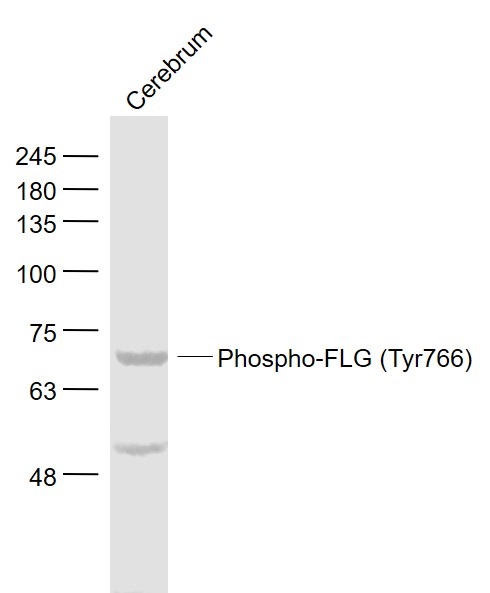
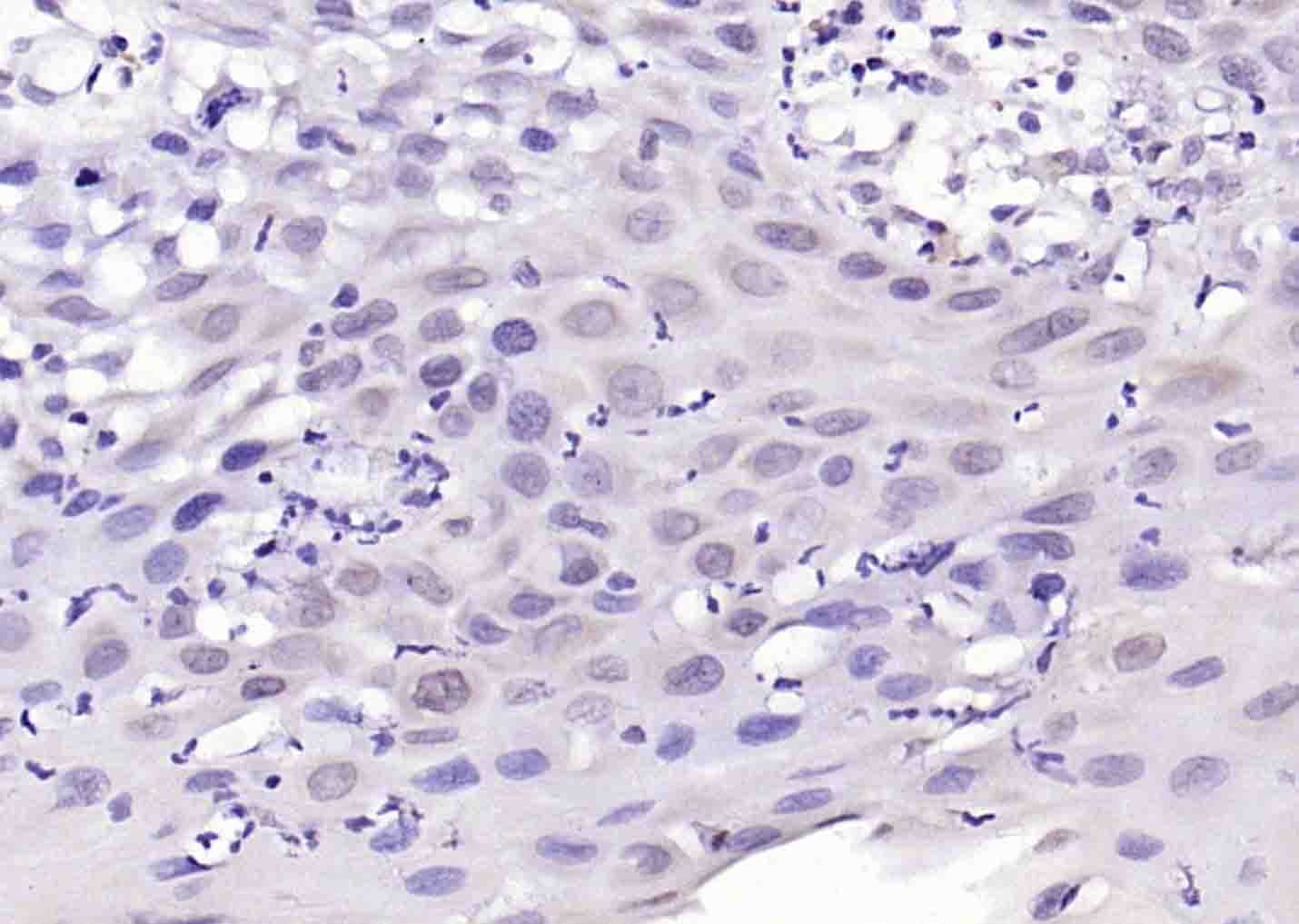
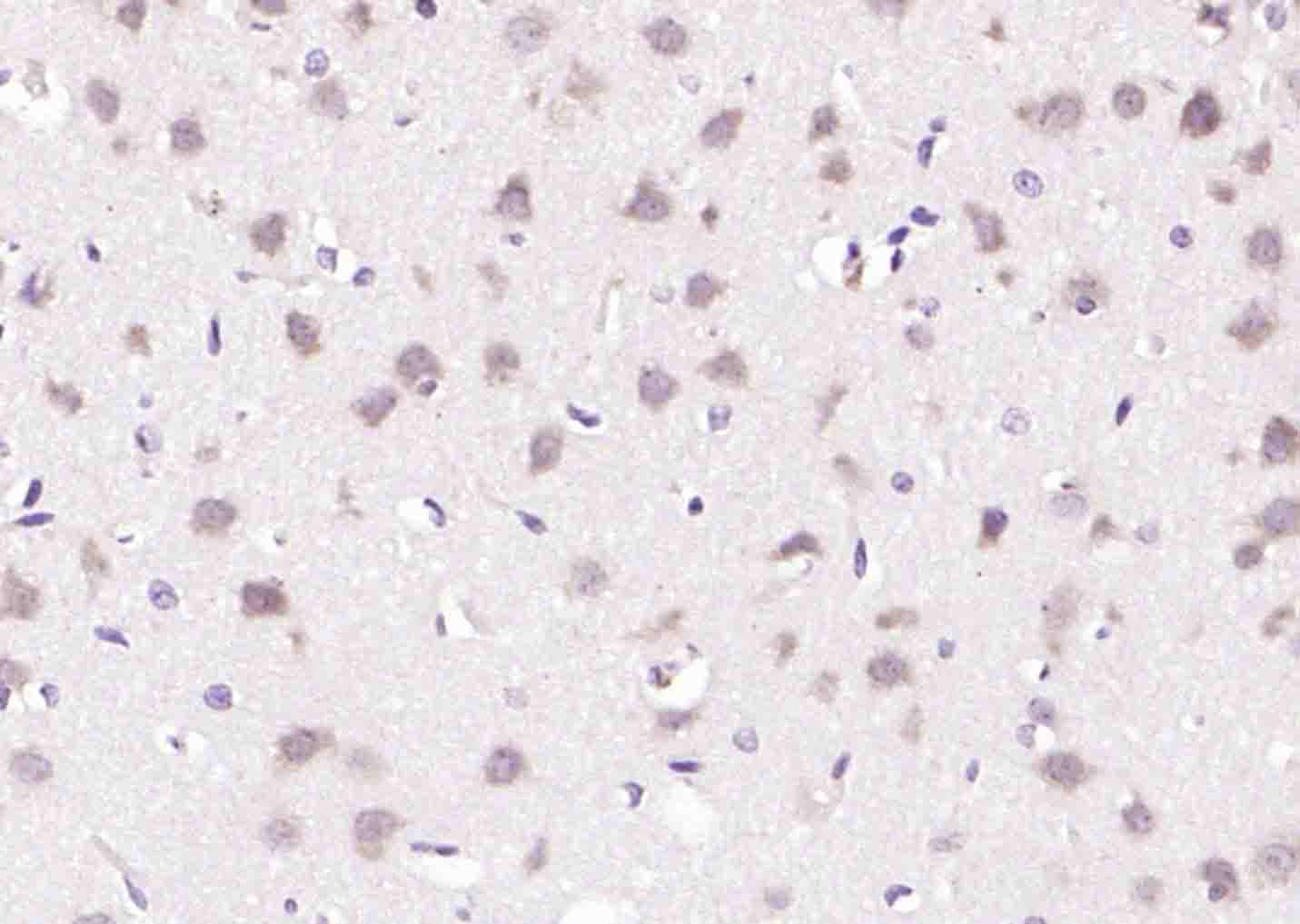
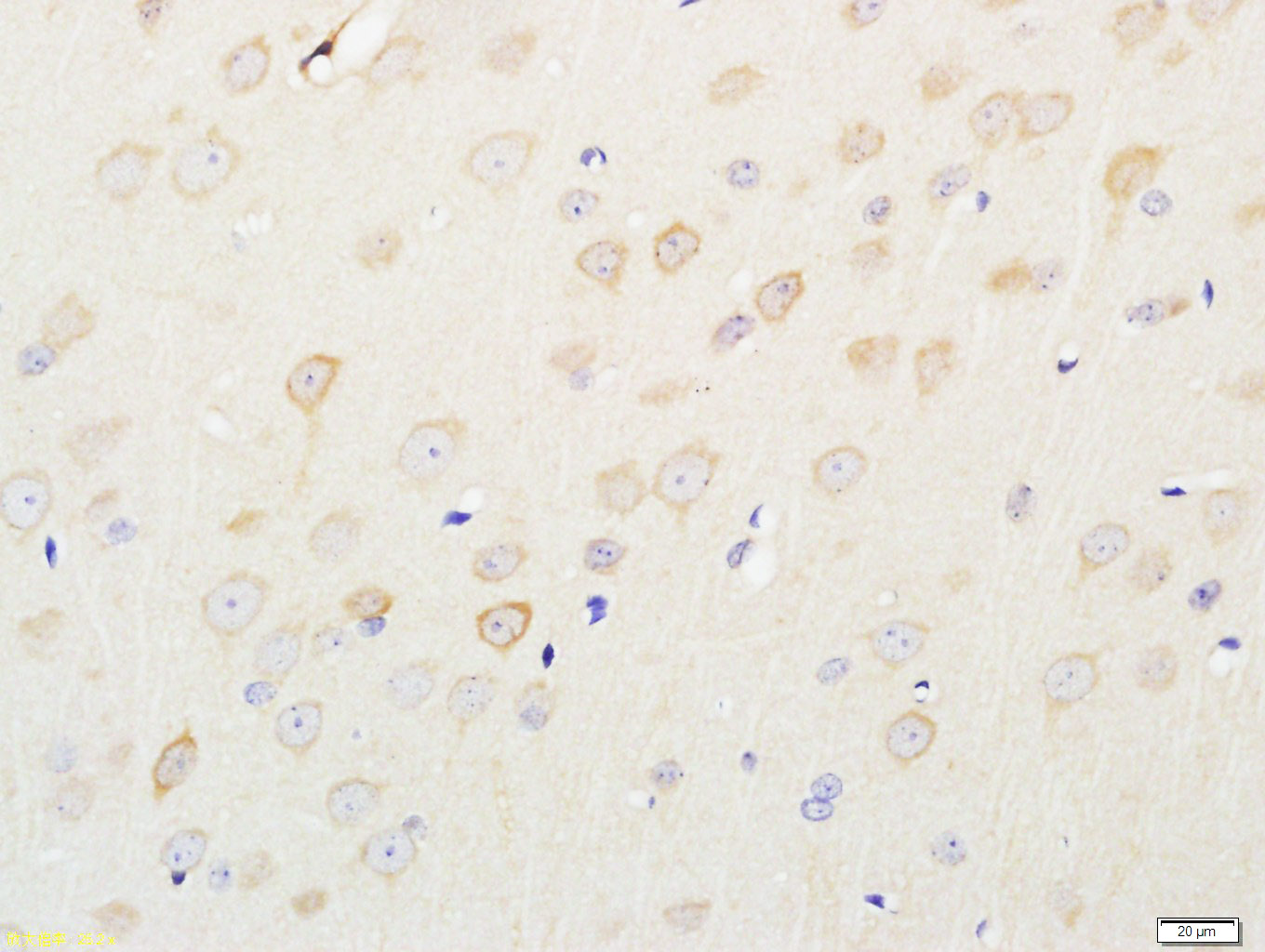
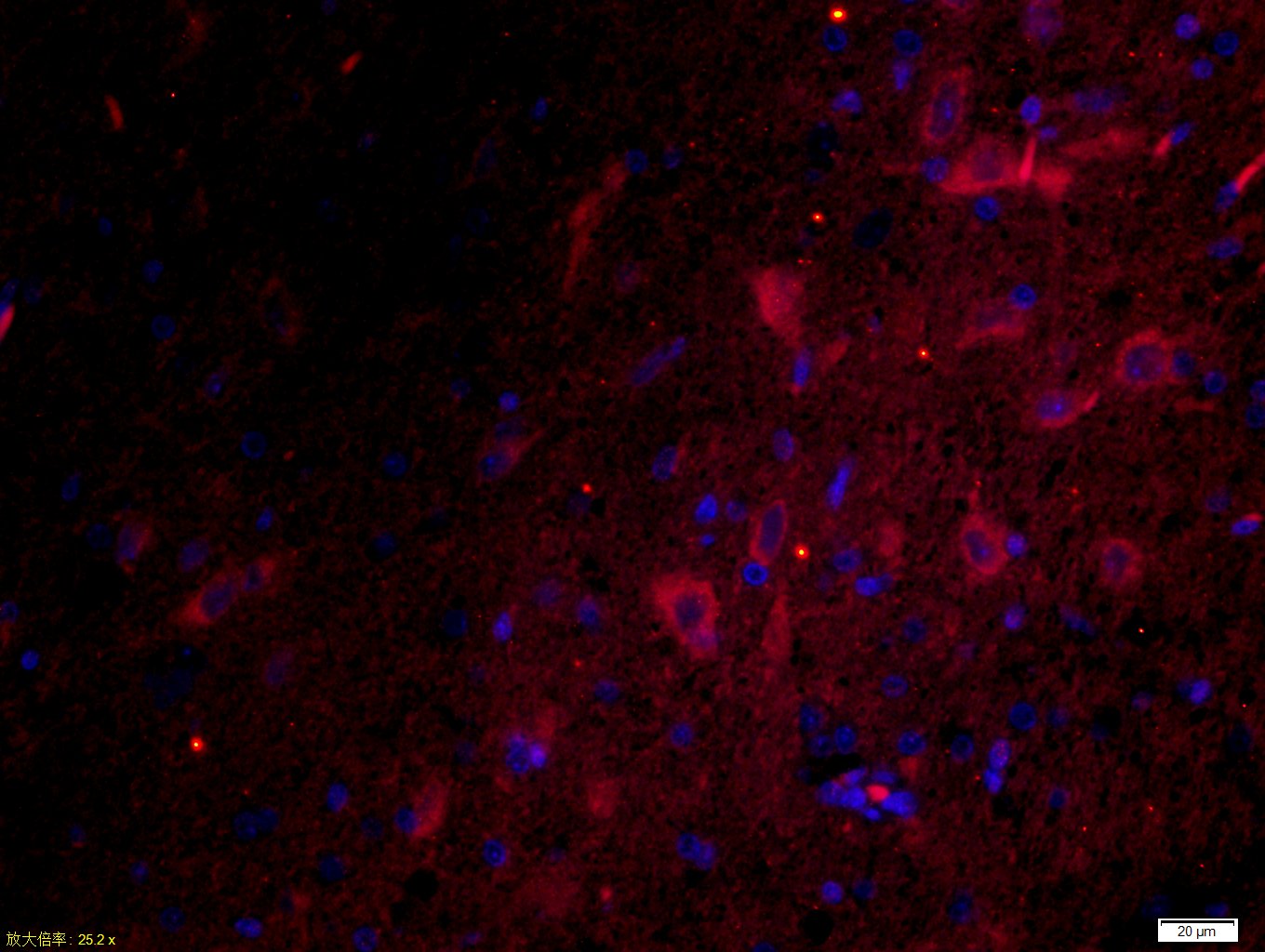


 +86 571 56623320
+86 571 56623320
 +86 18668110335
+86 18668110335

